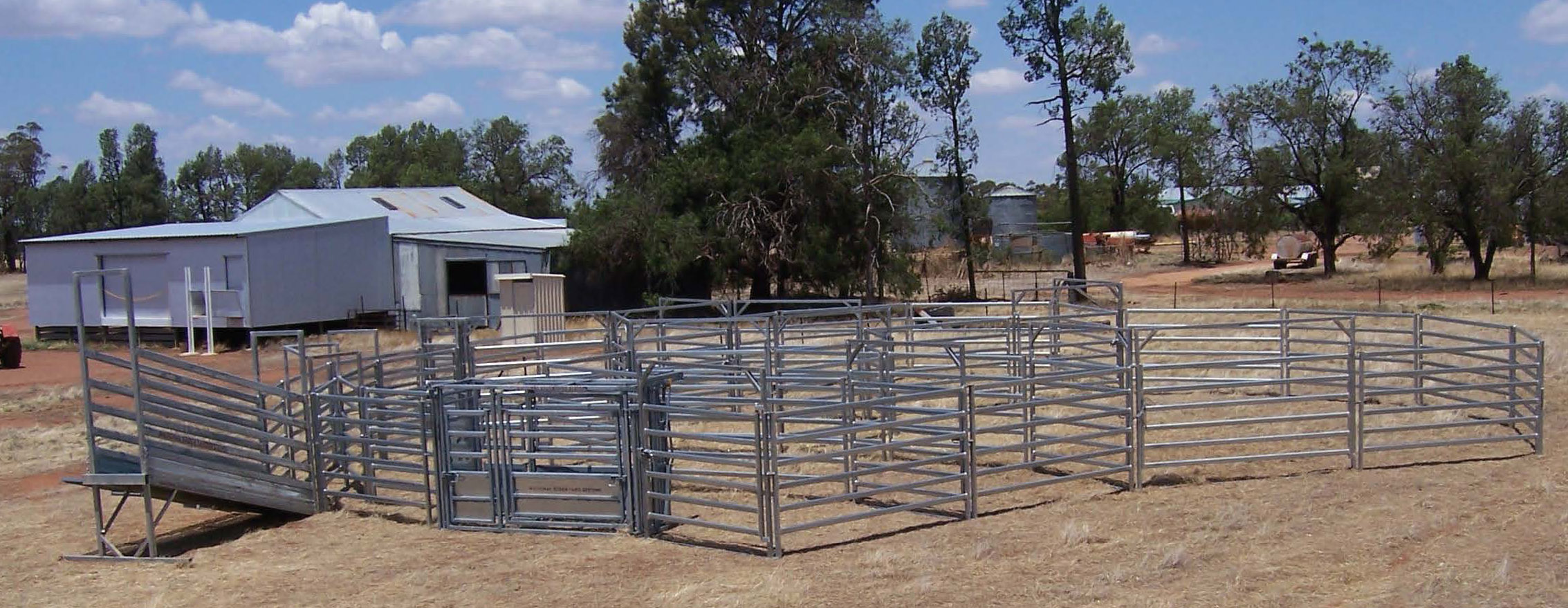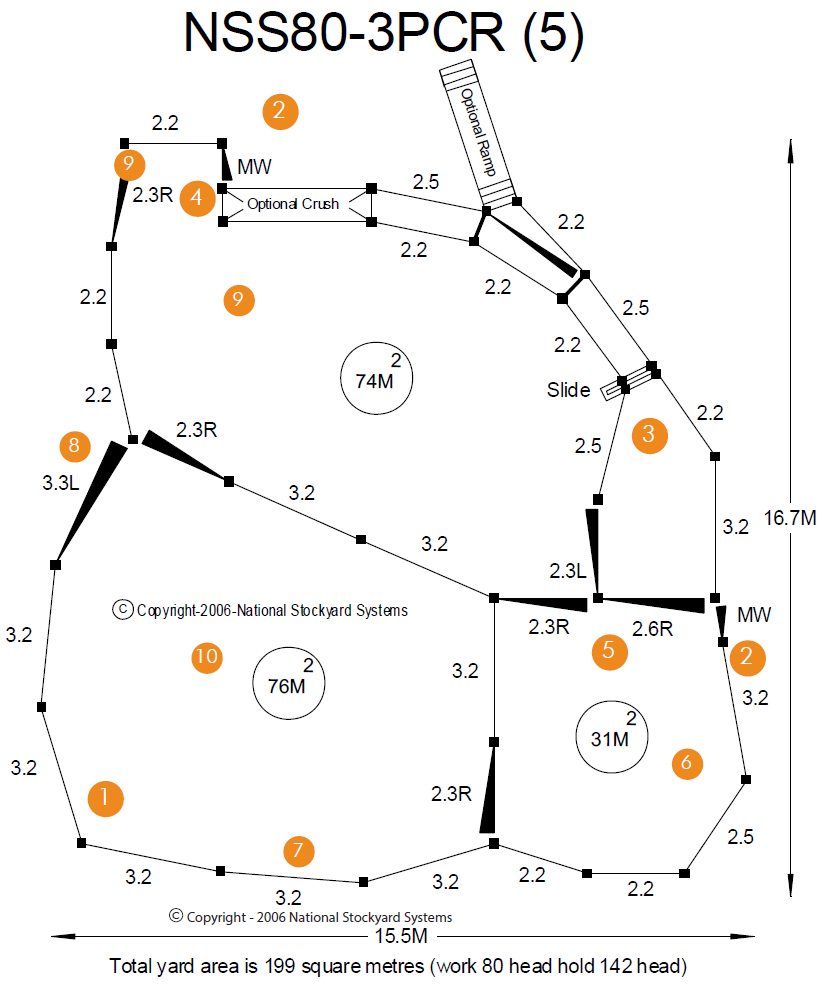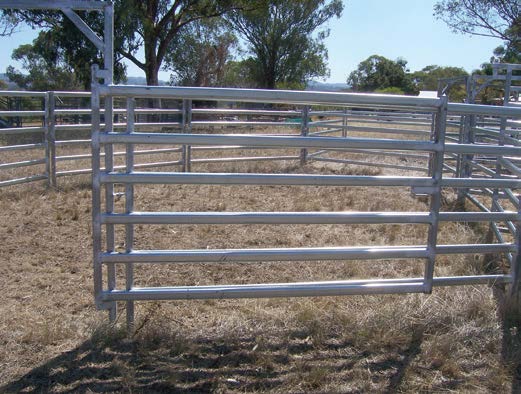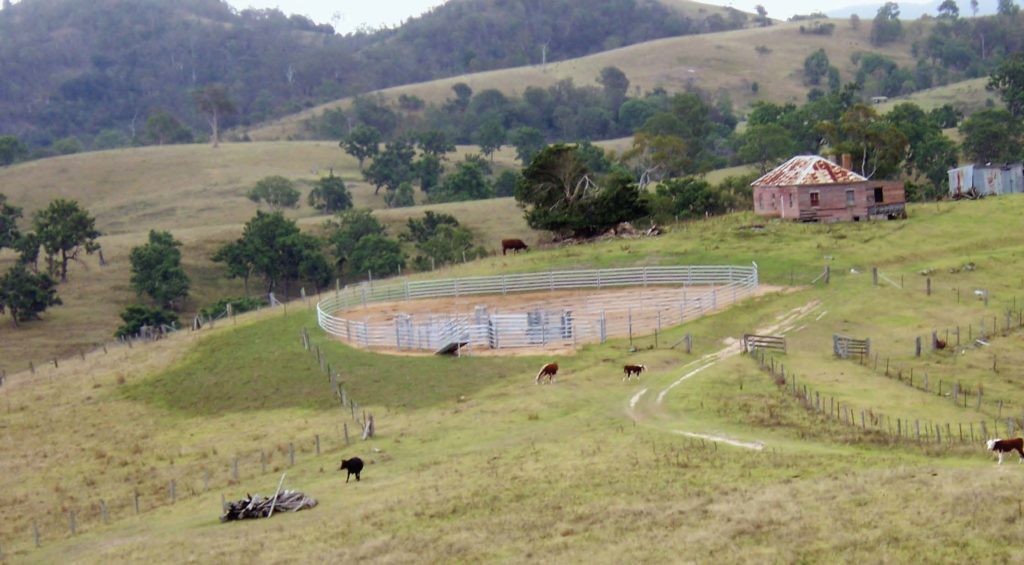Stock Yard Design
Correct cattle yard design will significantly assist in the handling of your cattle, the same of course applies for sheep, horses and other livestock.

- Lead up yards have rounded outside to encourage stock flow. No working yard corner is under 90 degrees.
- Manways are wide enough to prevent an animal being caught by the hips if accidentally left open or they can be used to file stock through if required. These are standard on most plans.
- Race entrance has off side in line with the race. This prevents two animals jamming and then both turning back. Generally the outside animal will go forward.
- Good operator access around headbail
- Gates fold right back 180º behind stock and through 100º
- Yards get smaller as stock approach race. Shorter panels are used in pressure areas.
- The longer panels in holding yards balance the yards and offer better value for money.
- Wide entrance gates are standard on larger yards
- Two way draft out of the crush
- An often repeated comment from clients is the yards are bigger than they look on paper
Outside yards can be enlarged easily. An extra 2 or 3 panels make a big difference in holding capacity.

AREA REQUIREMENTS FOR WORKING YARDS
- Realistic yard working capacities are quoted. Generally capacities and total holding numbers are based on area requirements to handle and work 400kg cattle.
- Cows and calves will require double this area.
- A circular yard with the same perimeter has a greater surface area than a square or rectangle yard (and stock flow better).
- Holding capacities quoted on our plans are based on 400 kg dry cattle
- Cows and calves should never be tightly forced or in the race together
| Holding Yards | Forcing Yards | |
|---|---|---|
| 100 - 300 kg | 1.3m² | 0.6m² |
| 300 - 500 kg | 1.4m² | 1.0m² |
| Over 500 kg | 1.6m² | 1.2m² |
| Cows & Calves | 2.2m² | 2.2m² |



